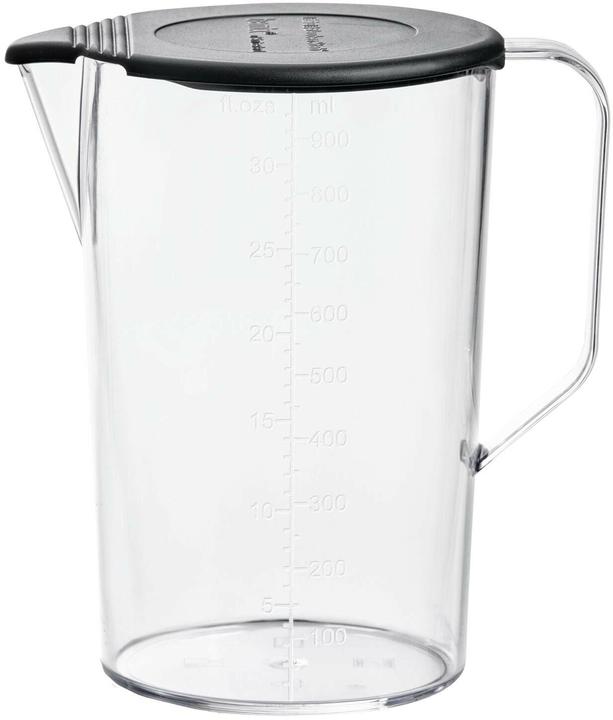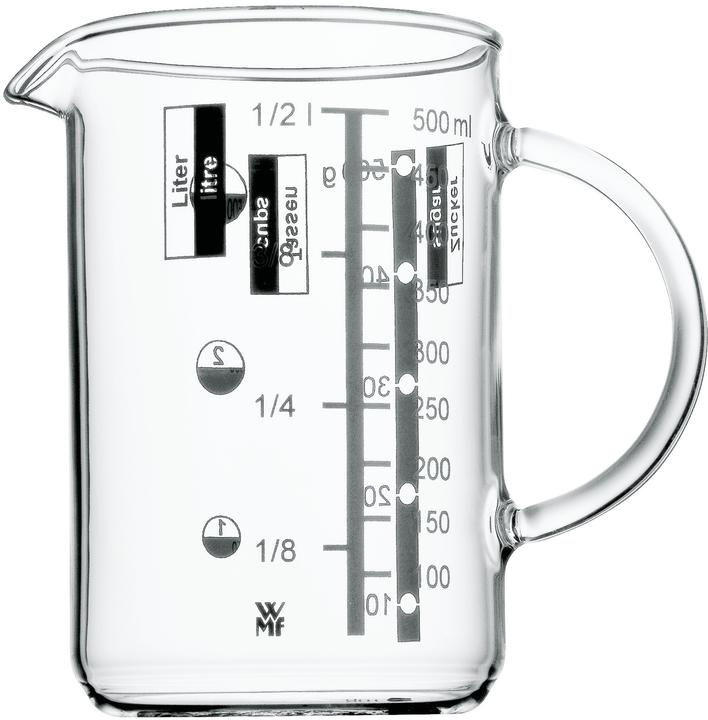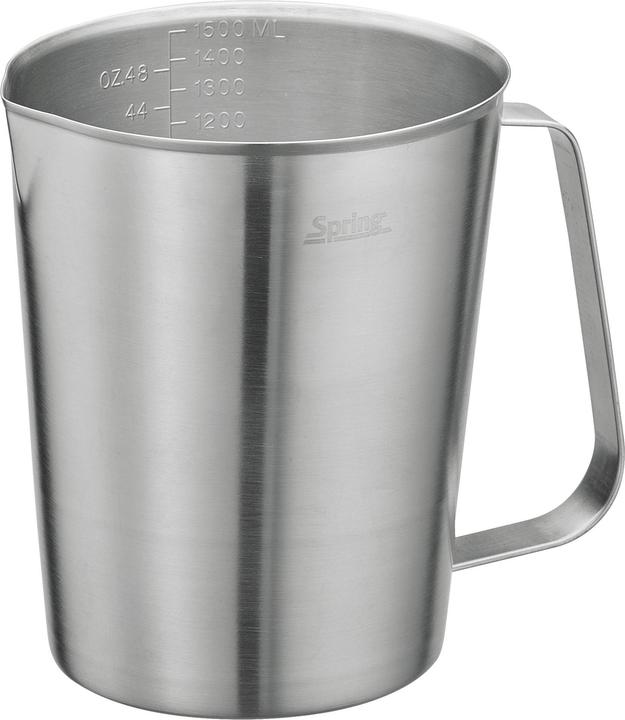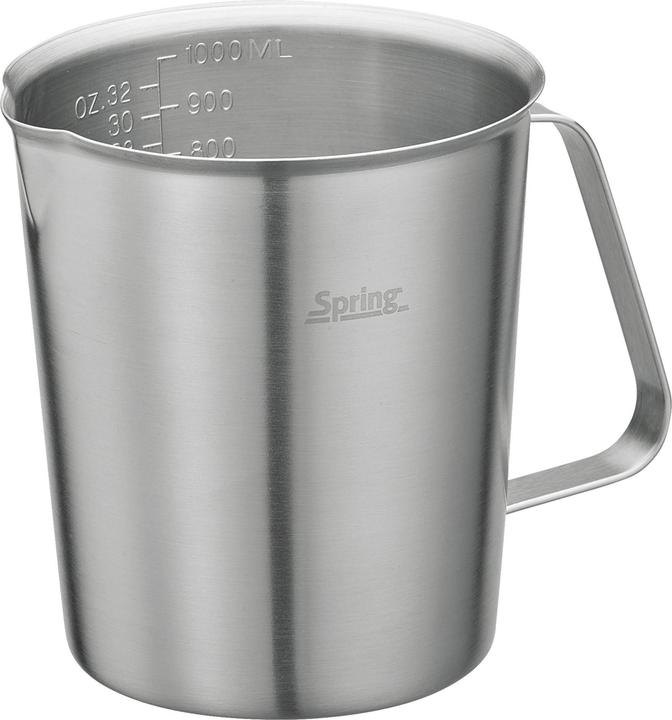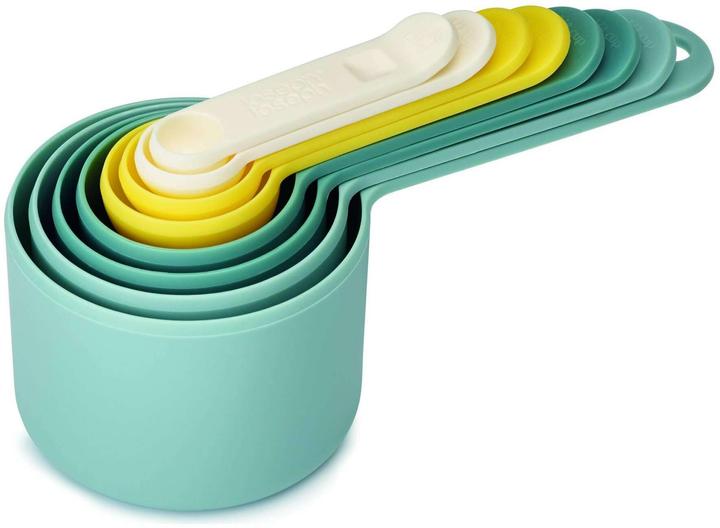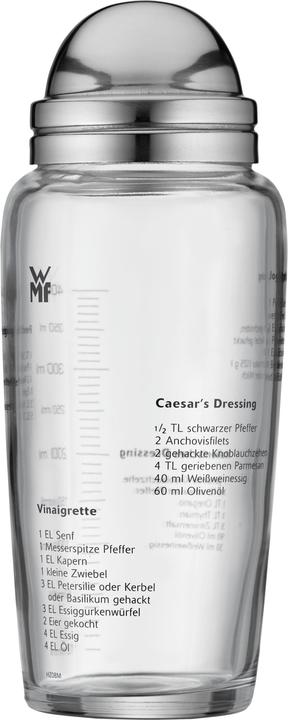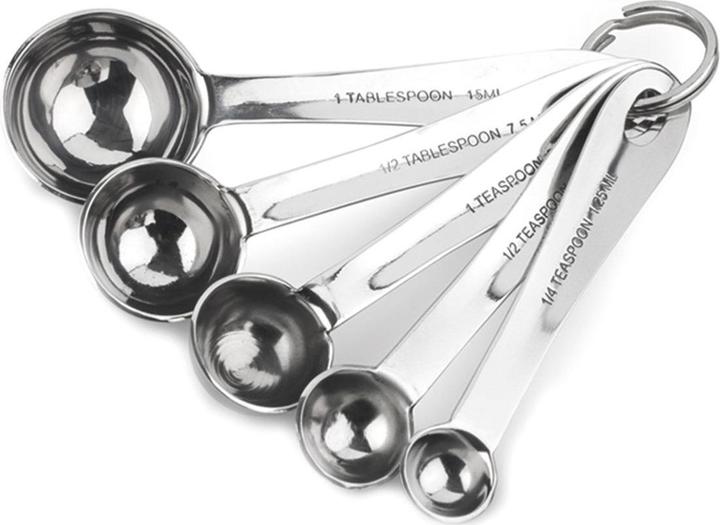
Too Many Measuring Cups? Here's How to Choose the Right One
Discover five essential factors to consider when selecting the perfect measuring cup for your kitchen needs.
Last updated 1 day ago. Automatically generated content.


Select options and limit the number of products
The type of measuring cup impacts your kitchen efficiency by determining how accurately you can measure ingredients. Choosing the right type can enhance your cooking and baking precision, ensuring consistent results and saving time.
Popular options (you can select more than one)
Measuring cup
Typical price
12.– to 27.–Features a graduated scale for measuring liquid and dry ingredients in various quantities.
Ideal for accurate measurements in cooking and baking, providing consistency and reducing preparation errors.
Bestseller
Measuring spoon
Typical price
11.– to 23.–Includes various sized spoons for precise measurement of small quantities.
Perfect for baking and cooking where exact measurements are crucial, reducing waste and improving recipe outcomes.
Bestseller
Dressing Shaker
Typical price
14.– to 35.–Combines measurement and mixing functions for creating dressings and sauces.
Convenient for preparing and storing homemade dressings, ensuring a well-blended consistency and easy serving.
Bestseller
Volume determines the capacity of a measuring cup, essential for accurately portioning ingredients in cooking and baking. Selecting the appropriate volume ensures efficiency and precision in food preparation, enhancing the overall culinary experience.
Popular options
Up to 500 ml
Typical price
9.– to 22.–Compact size suitable for small ingredient measurements.
Ideal for precise baking or cooking where accurate measurements of smaller quantities are crucial.
Bestseller
501 - 1000 ml
Typical price
14.– to 31.–Medium capacity allows for versatile use in various recipes.
Perfect for standard cooking needs, balancing space efficiency with adequate volume.
Bestseller
1001 - 2000 ml
Typical price
14.– to 35.–Large capacity designed for bulk ingredient measurements.
Beneficial for preparing large meals or batch cooking, reducing the need for multiple measurements.
Bestseller
Measuring scales on cups specify the units used for measuring liquids or ingredients, impacting precision and ease of use in cooking and baking. Choosing the right scale ensures accurate measurements, enhancing the quality of recipes and reducing the risk of errors.
Popular options (you can select more than one)
Litres
Typical price
11.– to 29.–Provides measurements in liters, suitable for larger quantities.
Ideal for recipes involving significant amounts of liquid, ensuring precise measurement for consistent results.
Bestseller
ml
Typical price
14.– to 25.–Uses milliliters for detailed and precise liquid measurement.
Perfect for small-scale recipes and precise ingredient measurement, offering flexibility and accuracy.
Bestseller
Cups (US)
Typical price
10.– to 23.–Measures in US cups, a common standard in American recipes.
Convenient for following US-based recipes, providing straightforward measurement without conversion.
Bestseller
Fl. oz
Typical price
15.– to 29.–Offers fluid ounce measurements, useful for moderate amounts.
Great for recipes requiring specific liquid quantities, simplifying conversions and enhancing precision.
Bestseller
The material group of measuring cups determines their durability, ease of cleaning, and overall functionality. Selecting the right material can enhance your cooking experience by providing reliable measurements, long-lasting use, and convenience in handling.
Popular options (you can select more than one)
Plastic
Typical price
10.– to 22.–Lightweight and often more affordable, plastic measuring cups are easy to handle and store.
Ideal for everyday cooking and baking, these cups are durable and resistant to shattering, making them suitable for busy kitchens.
Bestseller
Metal
Typical price
17.– to 51.–Metal measuring cups, especially stainless steel, offer superior durability and a professional appearance.
Perfect for frequent use, they resist staining and scratching, ensuring long-term accuracy and reliability.
Bestseller
Glass
Typical price
17.– to 31.–Glass measuring cups provide transparency for easy viewing of measurements and are often microwave-safe.
Best for precise liquid measurements, they do not absorb odors or stains, maintaining clarity and cleanliness over time.
Bestseller
The country of origin for measuring cups can influence the quality, craftsmanship, and design preferences of the product. Selecting a measuring cup from a particular country can reflect desired attributes such as durability, aesthetic appeal, and traditional expertise in manufacturing kitchen tools.
Popular options (you can select more than one)
Germany
Typical price
10.– to 17.–Known for precision engineering and high-quality standards in manufacturing.
German measuring cups often excel in durability and accuracy, offering reliable performance for precise cooking and baking.
Bestseller
Italy
Typical price
18.– to 25.–Renowned for elegant design and craftsmanship in kitchenware.
Italian measuring cups combine functionality with aesthetic appeal, ideal for those who value style in their cooking environment.
Bestseller
United Kingdom
Typical price
12.– to 22.–Offers a blend of traditional design and modern functionality in kitchen tools.
UK measuring cups are versatile and dependable, suitable for both classic recipes and contemporary cooking techniques.
Bestseller
